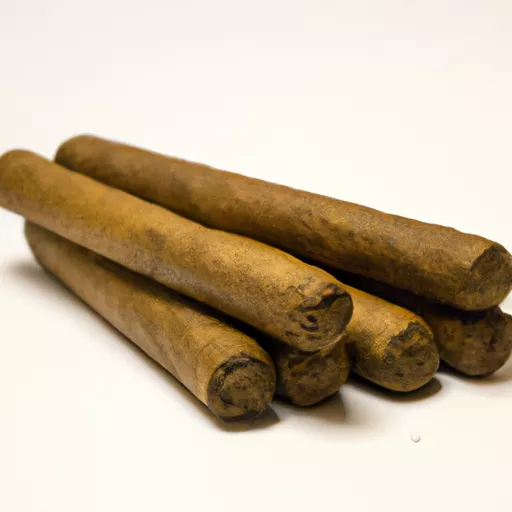
As a lover of cigars, I have recently discovered a new passion for little cigars. These small yet mighty smokes have opened up a whole new world of flavors and experiences for me. In this article, I will share with you all you need to know about little cigars, from their history and production to their different types and flavors.
First and foremost, let’s clarify what exactly a little cigar is. Also known as cigarillos, little cigars are miniature versions of regular cigars, typically between 3 to 4 inches in length. They are made using the same processes as traditional cigars, but with a thinner wrapper and less filler tobacco. This makes them a more affordable and approachable option for cigar enthusiasts, or even beginners who are looking to dip their toes into the world of cigars.
Little cigars have been around for centuries and have a rich history. They were first introduced in the late 1800s, when cigar makers started producing smaller versions of their cigars as a way to use up leftover tobacco. These smaller cigars quickly grew in popularity, and by the early 1900s, they were being mass-produced and sold in cigar boxes in the United States.
In the 1970s and 1980s, little cigars became even more popular, thanks to a loophole in the tobacco tax law. As they were classified as cigarettes, little cigars were taxed at a lower rate, making them a more affordable alternative for smokers. However, this loophole was closed in 2010, resulting in an increase in the price of little cigars.
But enough about its history, let’s get into the nitty-gritty of these little gems. Little cigars come in various shapes, sizes, and flavors. They are typically smaller and thinner than regular cigars, which makes them easier to smoke and carry around. The most popular sizes are the “corona” and “panatela,” but you can also find little cigars in a “cigarillo” size, which is slightly larger than a cigarette.
Little cigars also come in a wide range of flavors, from classic tobacco to fruity and sweet flavors such as cherry, vanilla, and chocolate. They are often infused with these flavors during the production process, resulting in a smooth and consistent taste throughout the smoke. These flavors add another layer of complexity to the smoking experience, making little cigars a favorite among many cigar enthusiasts.
Now, you may be wondering how little cigars are made. As mentioned before, they go through the same process as traditional cigars, but with a few differences. Firstly, the tobacco used for little cigars is typically air-cured, which means it is dried naturally rather than through heat. This gives the tobacco a lighter and more mellow flavor.
Next, the filler tobacco is rolled into a binder, creating the main body of the cigar. This is then wrapped in a thinner tobacco leaf, giving it a smooth and consistent outer layer. Little cigars are often made by hand, just like traditional cigars, but some manufacturers also use machines for mass production.
As with any type of cigar, the way you store and handle your little cigars is crucial to their quality and flavor. It is recommended to store them in a humidor, just like traditional cigars, to preserve their moisture and flavors. However, if you do not have a humidor, you can also use a sealed plastic bag with a humidification pack. Make sure to handle your little cigars with care to avoid damaging the wrapper and ruining your smoking experience.
Now comes the most exciting part, smoking and tasting little cigars. The first thing you will notice is that they are much quicker to smoke than traditional cigars. Their small size means that you can finish one in about 20 minutes, making them perfect for a short break or a quick smoke after a meal. The flavors are also more intense, as the smaller size means that the smoke is more concentrated. This adds a kick to the smoking experience, making it more enjoyable and satisfying.
When it comes to pairing little cigars with drinks, there are countless options. You can pair them with your favorite whiskey, bourbon, or even a cup of coffee. The key is to experiment and find what works best for you. I personally enjoy pairing my little cigars with a glass of red wine, as the bold flavors complement each other perfectly.
One of the best things about little cigars is that they are more affordable than traditional cigars, making them accessible to a wider range of smokers. You can find them in packs or boxes, with prices varying depending on the brand and type of little cigar. This also means that you can try out different flavors and types without breaking the bank, allowing you to expand your cigar palate.
In conclusion, little cigars may be small in size, but they pack a big punch when it comes to flavor and experience. They have a rich history and a wide range of flavors and sizes, making them a favorite among cigar enthusiasts. So, the next time you are in the mood for a quick and flavorful smoke, why not give little cigars a try? Trust me, you won’t regret it. Happy smoking!
